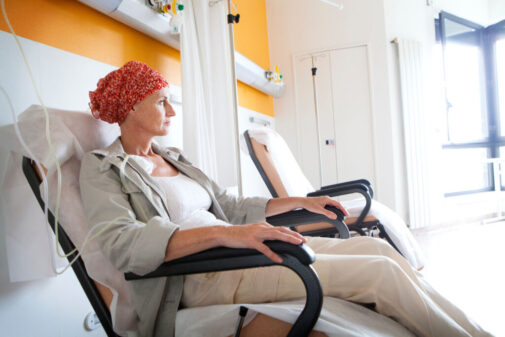Decoding mammogram BI-RADS results

Mammograms are invaluable. It’s the only imaging that has demonstrated a reduction in breast cancer mortality. In fact, women who have mammography screenings are 41% less likely to die of breast cancer within 10 years compared to those individuals who do not have the screening.
Dr. Jodi Brehm, a breast surgeon at Aurora Health Care, reminds us that mammograms are for detection, not prevention, and that’s why regular imaging is recommended. As a breast health advocate, she helps women understand the screening process. “As important as they are, mammograms are not 100% sensitive in finding breast cancer. That’s why it’s important to know that an abnormal mammogram is not necessarily cancer but usually a call for additional views and screenings to take a closer look,” she says.
At the time of the screening, the radiologist will review the films and speak to you about the findings and recommendations. Doctors use a standard system to describe mammogram results called the Breast Imaging Reporting and Data System or BI-RADS.
There are five levels of BI-RADS:
- BI-RADS 0: Incomplete. The radiologist may have seen an abnormality, but it was not clear and requires more tests. This can include another mammogram with the use of spot compression (applying compression to a smaller area), magnified views or an ultrasound. The radiologist will compare your new mammogram with older ones to see if there have been changes over time.
- BI-RADS 1: Negative. This is a normal test result. The breasts are symmetrical with no masses, lumps, distorted structures or suspicious calcifications.
- BI-RADS 2: This also is a negative test result. Benign findings may be detected and documented for future comparison. You will continue yearly screening mammograms.
- BI-RADS 3: A likely benign finding was discovered with recommendation for short-interval follow-up imaging (usually in six months). After two years with no change, you will return to the annual screening schedule.
- BI-RADS 4: A suspicious abnormality was found and a biopsy should be considered.
- BI-RADS 5: Highly suspicious for cancer (95% chance) and a biopsy is recommended.
“Most women are concerned about a BI-RADS level 3,” says Dr. Brehm. “It’s good to remember that level 3’s risk is under 2%, and we have advanced imaging on our side to address it appropriately. At BI-RADS levels 4 and 5, a whole new process kicks in.”
Does breast density affect results?
“Mammogram technology has advanced, and so has our understanding of breast density and the role it has to play in reading the screening results,” explains Dr. Brehm. “That’s why the FDA updated its guidelines, asking mammography centers to give patients information about the density of their breast tissue.”
About 50% of women in the U.S. have dense breast tissue. Your health care provider will use the following terms to share information about your breast density.
- Fatty: Less than 25% dense tissue
- Scattered areas of density: 25 to 50% dense tissue
- Heterogeneously dense: 50 to 75% dense tissue
- Extremely dense: More than 75% dense tissue
Remember, women should start having conversations with their provider about annual or biennial mammogram screenings starting at age 40 or earlier if they are at high risk for breast cancer.
Want to learn more about your risk for breast cancer? Take a free online quiz.
Related Posts
Comments
2 Comments
About the Author
Annette Guye-Kordus is a public affairs coordinator with Advocate Health Care and Aurora Health Care.


















Please do not rely solely on a mammogram to screen for breast cancer. I am a breast cancer survivor I had a lump discovered by my primary care doctor on a routine breast exam. My screening mammogram scheduled for the same day was changed to a diagnostic mammogram with ultrasound. Both were normal. The mammogram tech could feel my lump and put a marker by it, same with the ultrasound tech. I was referred to a surgeon who removed the lump and it was invasive breast cancer. Mammograms are one tool, but please have breast exams by a doctor and do self-exams monthly. If you have extremely dense breast tissue like I do also speak to your provider about additional screening tests.
I myself who gets a memo every year. I went for my annual last April, in 2024. Got my regular screening with a memo and the ultra sound. No lumps and no symptoms. Than I got the call from my GYNO to get the same test but as magnified. So I went back to get it and I was diagnosed with calcification in 1 breadt. Than I had a biopsy done and they found LCIS with that. So the Surgeon did a minor surgery 2 times to take out the effected areas and tried to be within the safety range with no luck. So the Dr sad she would recommend a mestectomy because it is growing so quickly. So I did. And gave the Dr the go ahead to do the surgery but I want a double which is a bilateral. So she did and said I pucked a good choice. Because the cancer in the non effected side ended up worse than the effected side. There are side effects with having a bilateral mestectomy. There are drains that you have to deal with for weeks, numbness, ghost pains, stiffness, scars, etc.
I do suggest to be tested yearly.